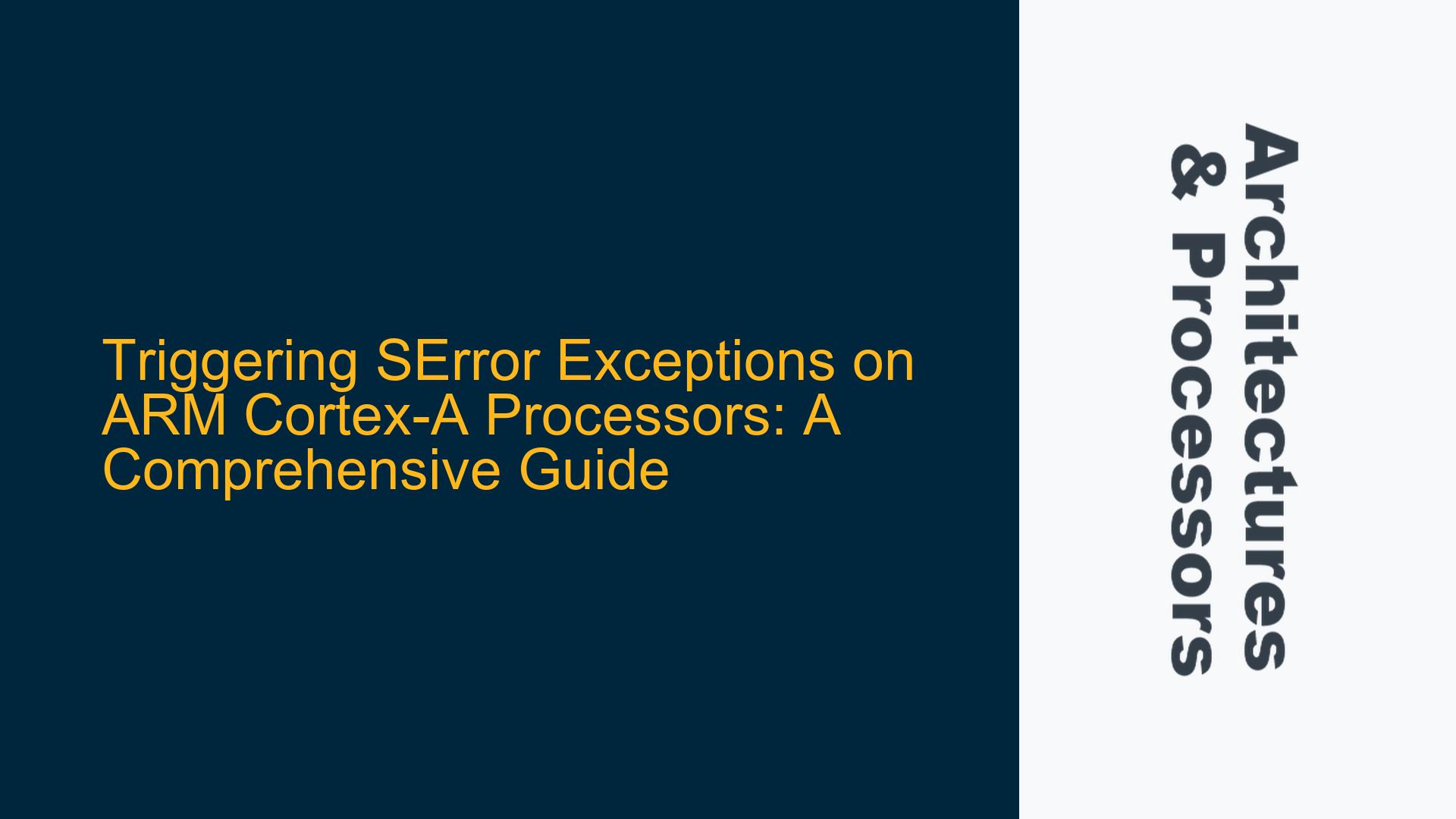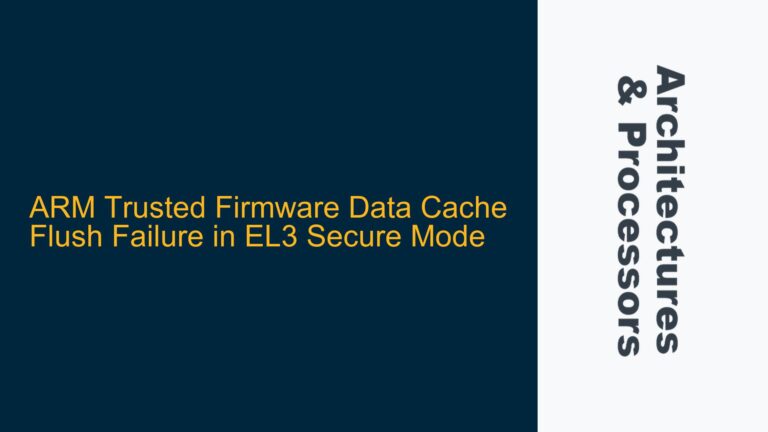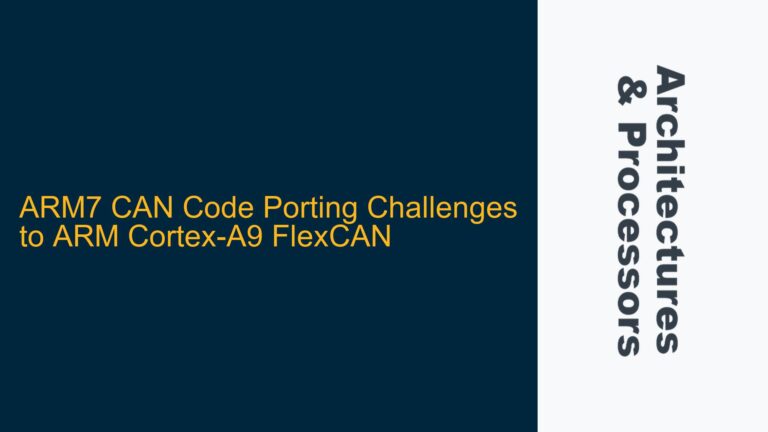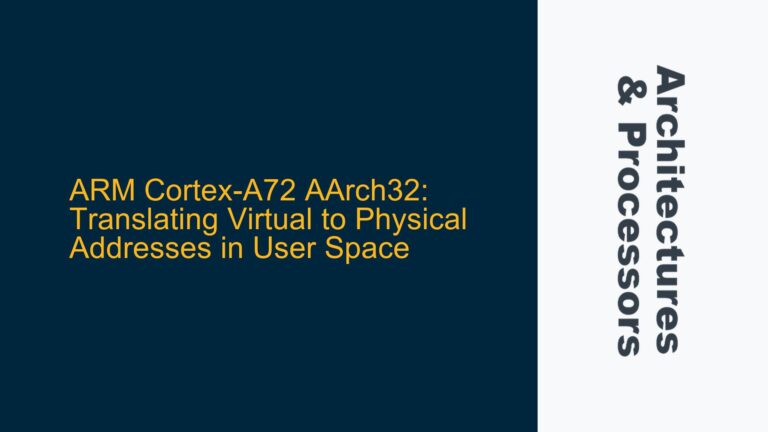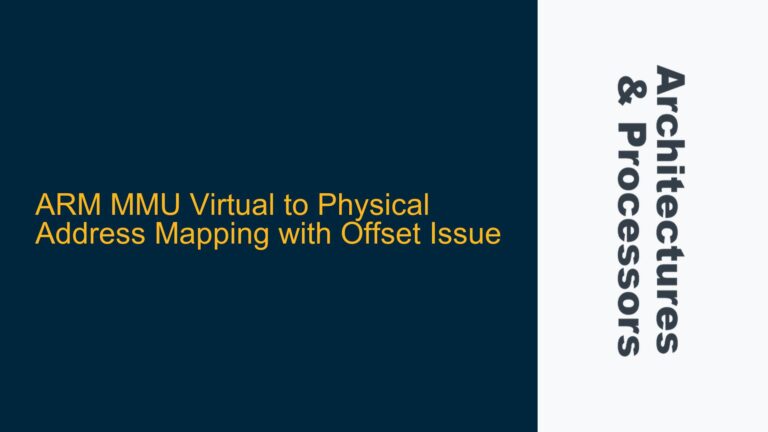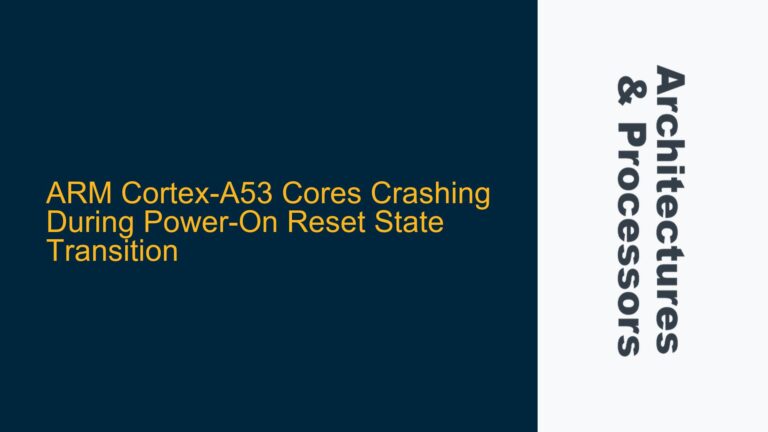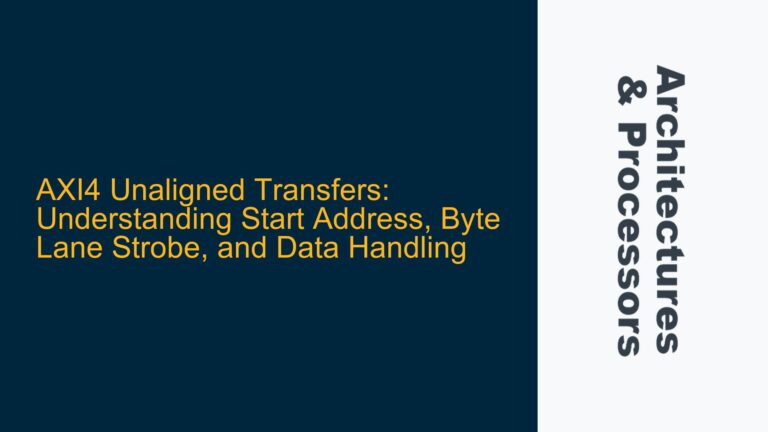Understanding SError Exceptions on ARM Cortex-A Processors
SError (System Error) exceptions are a critical aspect of ARM Cortex-A processors, designed to handle severe system-level errors that cannot be managed through normal exception handling mechanisms. These errors typically arise from issues such as memory access violations, bus errors, or other hardware faults that compromise system integrity. SError exceptions are classified as asynchronous aborts, meaning they can occur at any point during instruction execution, often as a result of external events or internal processor faults.
In ARM Cortex-A architectures, SError exceptions are part of the exception model defined by the ARMv8-A architecture. When an SError exception is triggered, the processor saves the current state, including the Program Counter (PC) and Processor State (PSTATE), into the exception-specific registers. The processor then jumps to the exception vector table entry corresponding to the SError exception, where the handler routine is executed. Proper handling of SError exceptions is crucial for system reliability, as unhandled SErrors can lead to undefined behavior, system crashes, or data corruption.
The ARM Cortex-A53, a popular implementation of the ARMv8-A architecture, is widely used in embedded systems and mobile devices. It features a dual-issue, in-order pipeline with advanced power management and error-handling capabilities. Understanding how to intentionally trigger SError exceptions on the Cortex-A53 is essential for developing robust error-handling mechanisms and validating system behavior under fault conditions.
Potential Causes of SError Exceptions in ARM Cortex-A Systems
SError exceptions can be triggered by a variety of hardware and software conditions. One common cause is accessing unmapped or invalid memory regions. When a memory access operation targets an address that is not mapped to any physical memory or device, the Memory Management Unit (MMU) generates a fault, which can escalate to an SError exception if not handled by lower-level exception handlers. This scenario is particularly relevant during Direct Memory Access (DMA) operations, where incorrect memory addresses or misconfigured DMA controllers can lead to bus errors.
Another potential cause of SError exceptions is the violation of memory protection mechanisms. ARM Cortex-A processors implement privilege levels and memory protection schemes to prevent unauthorized access to critical system resources. If a lower-privileged process attempts to access a restricted memory region or execute a privileged instruction, the processor may trigger an SError exception. This behavior is often observed in multi-core systems where shared resources are accessed concurrently without proper synchronization.
Hardware faults, such as parity errors in caches or Translation Lookaside Buffers (TLBs), can also lead to SError exceptions. These faults are typically caused by transient conditions like electromagnetic interference or manufacturing defects. In such cases, the processor detects the fault during cache or TLB operations and raises an SError exception to prevent further corruption of system state.
Finally, SError exceptions can be triggered by external events, such as interrupts from error-detection mechanisms in peripherals or interconnects. For example, a peripheral device may signal an error condition through an interrupt, which the processor translates into an SError exception if the error is deemed critical. This mechanism allows the system to respond to hardware faults in a timely manner, minimizing the impact on system performance and reliability.
Techniques for Triggering and Handling SError Exceptions
To intentionally trigger an SError exception on an ARM Cortex-A processor, developers can employ several techniques, each targeting specific hardware or software conditions. One effective method is to access unmapped memory regions. By writing to or reading from an address that is not mapped to any physical memory or device, the MMU generates a fault that can escalate to an SError exception. This approach is particularly useful for testing memory protection mechanisms and error-handling routines.
Another technique involves violating memory protection schemes. By configuring the MMU to restrict access to specific memory regions and then attempting to access those regions from a lower-privileged process, developers can trigger SError exceptions. This method is valuable for validating the behavior of privilege-level enforcement and memory protection mechanisms in multi-core systems.
Hardware faults can be simulated to trigger SError exceptions. For example, developers can induce cache or TLB parity errors by manipulating the cache or TLB state through low-level firmware or hardware debugging tools. This approach allows for the testing of error-detection and recovery mechanisms in the processor and memory subsystem.
External events can also be used to trigger SError exceptions. By configuring peripherals or interconnects to signal error conditions, developers can simulate hardware faults and observe the system’s response. This technique is particularly useful for testing the integration of error-handling mechanisms across different system components.
Once an SError exception is triggered, proper handling is essential to ensure system stability and reliability. The exception handler should first save the current processor state, including the PC and PSTATE, to facilitate recovery. The handler should then identify the cause of the exception by examining the fault status registers, such as the Data Fault Status Register (DFSR) and the Instruction Fault Status Register (IFSR). Based on the fault type, the handler can take appropriate corrective actions, such as invalidating caches, resetting peripherals, or restarting affected processes.
In addition to handling the exception, developers should implement logging and diagnostic mechanisms to capture detailed information about the fault. This information can be used for post-mortem analysis and debugging, helping to identify and resolve underlying issues. By combining intentional fault injection with robust error-handling and diagnostic mechanisms, developers can ensure the reliability and resilience of ARM Cortex-A systems under a wide range of fault conditions.
Conclusion
Triggering and handling SError exceptions on ARM Cortex-A processors is a critical aspect of developing reliable and robust embedded systems. By understanding the causes of SError exceptions and employing targeted techniques to trigger them, developers can validate their error-handling mechanisms and ensure system stability under fault conditions. Proper handling of SError exceptions, combined with comprehensive diagnostic and logging mechanisms, is essential for maintaining system integrity and performance in the face of hardware and software faults. Through rigorous testing and validation, developers can build systems that are resilient to errors and capable of recovering gracefully from unexpected conditions.
